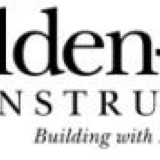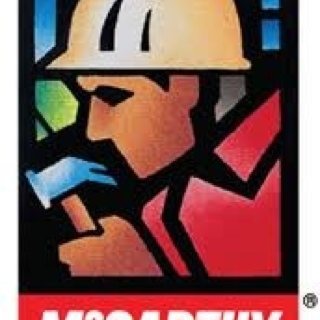Information
-
Client / Site
-
Conducted on
-
Prepared by
-
Location
VISUAL INSPECTION FIELD LOG
-
Select date
-
INSPECTION TYPE:
- Weekly
- Pre-Storm
- During Rain Event
- Post-Storm
SITE INFORMATION
-
WDID NUMBER
-
Site Name?
-
Approximate area of exposed site?
-
Construction stage and completed activities?
WEATHER AND OBSERVATIONS
-
Date rain predicted to occur?
-
Predicted % chance of rain?
-
Estimated storm beginning: (date and time)
-
Estimated storm duration: (hours)
-
Estimated time since last storm: (days or hours)
-
Rain gauge reading: (inches)
OBSERVATIONS; If yes, identify location
-
Free of odors?
-
Free of floating materials?
-
Free of suspended material?
-
Free of water sheen?
-
Free from discolorations?
-
Free from Turbidity?
SITE INSPECTION(S)
-
Outfalls or BMPs Evaluated / Note Any Deficiencies
-
Photos taken
-
Photo Reference IDs:
CORRECTIVE ACTIONS IDENTIFIED (Note if SWPPP/REAP change is needed)
-
Note any corrective actions
RISK LEVEL SAMPLING LOG
-
Risk Level
-
Sampling event type
-
pH Meter no./Desc:
-
Turbidity Meter ID No./ Desc:
-
Date and time of calibration
FIELD pH TURBIDITY MEASUREMENTS
-
1 Discharge location description
Levels
-
pH
-
Turbidity
-
Time
-
2 Discharge location description
Levels
-
pH
-
Turbidity
-
Time
-
3 Discharge location description
Levels
-
pH
-
Turbidity
-
Time
-
4 Discharge location description
Levels
-
pH
-
Turbidity
-
Time
-
5 Discharge location description
Levels
-
pH
-
Turbidity
-
Time
GRAB SAMPLES COLLECTED
-
Discharge Location
Discharge info
-
Sample Type
-
SSC
-
Other - Specify
-
Time Collected
-
Discharge Location
Discharge info
-
Sample Type
-
SSC
-
Other - Specify
-
Time Collected
-
Discharge Location
Discharge info
-
Sample Type
-
SSC
-
Other - Specify
-
Time Collected
-
Discharge Location
Discharge info
-
Sample Type
-
SSC
-
Other - Specify
-
Time Collected
-
Discharge Location
Discharge info
-
Sample Type
-
SSC
-
Other - Specify
-
Time Collected
UPSTREAM GRAB SAMPLE LOCATION
-
pH Results
-
pH Result
-
Time of sample
-
Notes
Turbidity Results
-
Turbidity Result
-
Time of sample
-
Notes
SSC Results
-
SSC Results if collected
-
Time of sample
-
Notes
DOWNSTREAM GRAB SAMPLE LOCATION
-
pH Results
-
pH Result
-
Time of sample
-
Notes
Turbidity Results
-
Turbidity Result
-
Time of sample
-
Notes
SSC Results
-
SSC Results if collected
-
Time of sample
-
Notes
--------- PART II. OBSERVATIONS. Describe deficiencies in PART III.
GOOD HOUSEKEEPING FOR CONSTRUCTION MATERIALS
-
Inventory of products (excluding materials designed to be outside)
-
Stockpiled construction materials not actively in use are covered and bermed?
-
All chemicals are stored in watertight containers with appropriate secondary containment?
-
Construction materials are minimally exposed to precipation?
-
BMP's preventing the off-site tracking of materials are implemented and properly effective
GOOD HOUSEKEEPING FOR WASTE MANAGEMENT
-
Wash/rinse and materials are prevented from being disposed into the storm drain system
-
Portable toilets are contained to prevent discharges of waste
-
BMP's preventing the offsite tracking of materials are implemented and properly effective.<br>
-
Sanitation facilities are clean and with no apparent for leaks and spills
-
Equipment is in place to cover waste disposal containers at the end of business day and during rain events<br>
-
Discharges from waste disposal containers are prevented from discharging to the storm drain system / receiving water
-
Stockpiled waste material is securely protected from wind and rain if not actively in use
-
Procedures are in place for addressing hazardous and non-hazardous spills
-
Appropriate spill response personnel are assigned and trained
-
Equipment and materials for clean up of spills is available onsite
-
Washout areas are contained appropriately to prevent discharge or infiltration into the underlying soil
GOOD HOUSEKEEPING FOR VEHICLE STORAGE AND MAINTENENCE
-
Measures are in place to prevent oil/grease/fuel from leaking into the ground, storm drains or surface waters
-
All equipment and vehicles leaks are cleaned immediately and disposed of properly
-
Vehicle and equipment leaks are cleaned immediately and disposed of properly
-
All equipment or vehicles are fueled, maintained and stored in a designated area with appropriate BMP's
GOOD HOUSEKEEPING FOR LANDSCAPE MATERIALS
-
Stockpiled landscape materials such as mulches and topsoil are contained and covered when not actively in use
-
Erodible landscape material has not been applied 2 days before or during a rain event
-
Erodible landscape materials are applied at quantities and rates in accordance with MFR recommendations
-
Bagged erodible landscape materials are stored on pallets and covered
GOOD HOUSEKEEPING FOR AIR DEPOSITION OF SITE MATERIALS
-
Good housekeeping measures are implemented onsite to control the air disposition of site materials and from site operations
NON-STORMWATER MANAGEMENT
-
Non-stormwater discharges are properly controlled
-
Vehicles are washed in a manner to prevent non-stormater discharges to surface water or drainage system
-
Streets are cleaned in a manner to prevent unauthorized non-stormwater discharges to surface waters or drainage system
EROSION CONTROLS
-
Wind erosion controls are effectively implemented
-
Effective soil cover is provided for disturbed areas inactive (i.e., not scheduled to be disturbed for 14 days) as well as finished slopes, open space and completed lots
-
The use of plastic materials is limited in cases when a more sustainable environmentally friendly alternative exists
SEDIMENT CONTROLS
-
Perimeter controls are established and effective at controlling erosion and sediment discharges from the site
-
Entrances and exits are stabilized to control erosion and sediment discharges from the site
-
Sediment basins are properly maintained
-
*** Linear sediment control along toe and face of slope and at ground breaks - Risk Level 2 & 3 only
-
*** Limit construction activity to and from site to entrances and exits that employ effective controls to prevent offsite tracking (Risk level 2 & 3 only)
-
*** Ensure all storm, drain inlets and perimeter controls, runoff control BMP's and pollutants controls at entrances and exits are maintained and protected from activities to reduce their effectiveness (Risk level 2 & 3 only)
-
*** Inspect all immediate access roads daily (Risk level 2 & 3 only)
RUN-ON AND RUN-OFF CONTROLS
-
Run-on to the site is effectively managed and directed away from all disturbed areas
OTHER
-
Are the project SWPPP and BMP plans up to date, available on-site and being properly implamented
-------- PART III, DESCRIPTION OF BMP DEFICIENCIES
-
Deficiencies
-
List Deficiency
-
Date of Repairs
Deficiencies
-
List Deficiency
-
Date of Repairs
Deficiencies
-
List Deficiency
-
Date of Repairs
Deficiencies
-
List Deficiency
-
Date of Repairs
-------- Part V, ADDITIONAL DURING STORM OBSERVATION. If BMP's cannot be inspected during inclement weather, list the results of visual inspections at all relevant outfalls, discharge points and downstream locations. Note odors or visible sheen on the surface of discharges.
-
Additional Observations
-
Note Location
-
Description
Additional Observations
-
Note Location
-
Description
Additional Observations
-
Note Location
-
Description
Additional Observations
-
Note Location
-
Description
Additional Observations
-
Note Location
-
Description
Additional Observations
-
Note Location
-
Description
Additional Observaions
-
Note Location
-
Description
-------- PART IV, ADDITIONAL PRE-STORM OBSERVATIONS
-
Do stormwater storage and containment areas have adequate freeboard? if no, complete part III
-------- PART VI, ADDITIONAL POST-STORM OBSERVATIONS. Visually observe storm-water discharges at all discharge locations within two business days (48 hours) after each qualifying rain event and observe the discharge of stored or contained storm-water that is derived from a qualifying rain event.
-
Discharge location or containment area
-
Visual Observations
-
Discharge location or containment area
-
Visual Observations
-
Discharge location or containment area
-
Visual Observations
-
Discharge location or containment area
-
Visual Observations
-
Discharge location or containment area
-
Visual Observations
-------- Part VII, ADDITIONAL CORRECTIVE ACTIONS REQUIRED. Identify additional corrective actions not included with BMP deficiencies (Part III) above. Note if SWPPP change is required
-
Required actions
-
Implementation date
-
Required actions
-
Implementation date
-
Required actions
-
Implementation date
INSPECTOR INFORMATION
-
Inspector Name and title
-
Add signature
-
Select date










